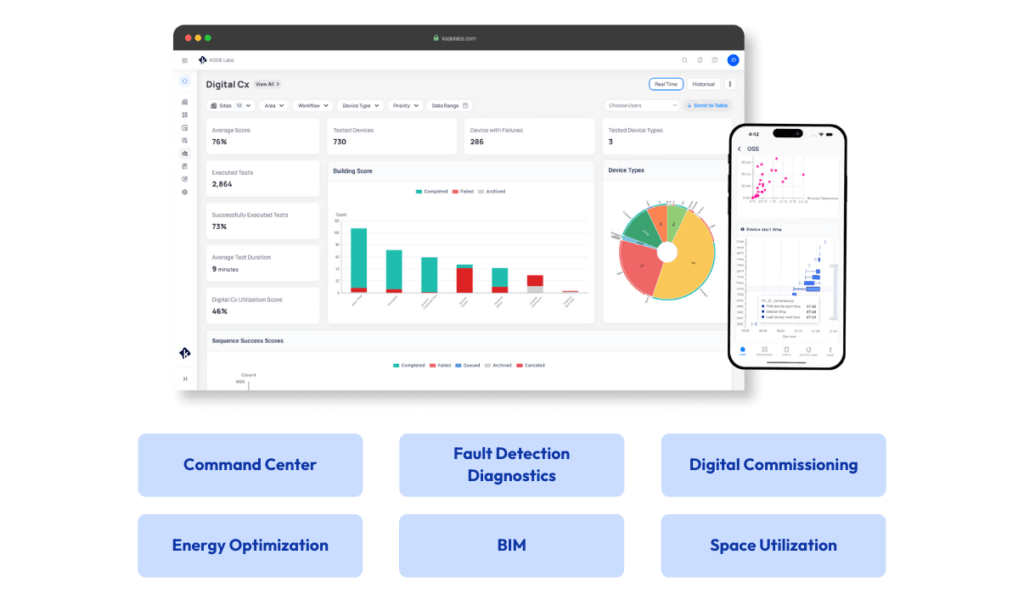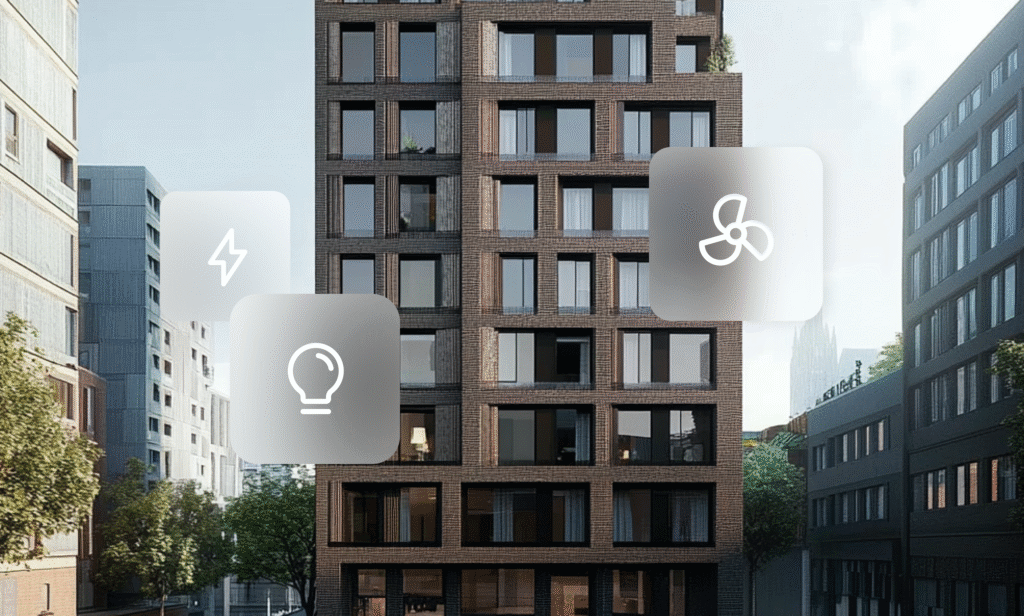
Building
Portfolio
Office, Retail, Mixed-Use Residential

Location
Michigan, US

Solution
Command Center
Equipment Performance Optimization
Energy Savings
By KODE Team
On this page
Sign up to our newsletter
Subscribe to receive the latest blog posts to your inbox every week.
By subscribing you agree to with our Privacy Policy.
Bedrock Detroit is the largest commercial real estate firm in downtown Detroit with over 100 buildings and close to 20 million square feet under management. Bedrock launched a real estate expansion plan in 2011 that included a mix of buying, constructing, and renovating buildings.
The challenge
Bedrock quickly realized that managing the HVAC, lighting, and fire systems in these buildings would require training on 10 different software interfaces provided by various equipment manufacturers including including HVAC, Lighting, Fire Control, and various Johnson Controls, Honeywell, Siemens, Lutron, Simplex, Notifier and others. The proprietary software operating systems further complicated both the process of purchasing new equipment and the servicing of existing equipment. Proprietary systems often meant higher purchase prices and settling for the equipment that works best with the manufacturers ecosystem and not necessarily what works best for the building. On the service side it meant multiple contractors and multiple layers of management were involved in any major renovation or upgrade.
The solution
Bedrock took a two-pronged approach to their smart building strategy and teamed up with both Tridium and KODE Labs to unify their operational technologies. The Tridium Niagara Framework® was deployed across the portfolio, providing a local backbone at each building to consolidate information from the variety of building systems and to eliminate the headaches around procurement and service contracting. The Bedrock strategy specifies Niagara JACEs to act as gateways that interface with the cloud-based smart building operating system KODE OS. Data from each Niagara device is centralized on KODE OS, where further processing is done to apply portfolio-wide standards for naming, visualization, and history. This approach radically simplifies Bedrock’s ability to train users, manage buildings, and scale algorithms for sustainable operation. Furthermore, KODE OS utilizes open APIs to connect to advanced IoT sensors such as occupancy and indoor air quality where that data is combined and optimized in accordance with the building systems.
“KODE has enabled our operational teams to have a single source solution into all of our BMS systems for 15M sq/ft and more to come. KODE OS aggregates our data into a comprehensive and easy to digest manner displayed on customizable dashboards where we can act by analyzing, predicting and make the changes required. This allows our local building Engineers and Property Managers to ensure a best in class client experience when it comes to comfort, which we believe is what our tenants care about the most from Bedrock.
Our Command Center profiles have changed from Building Engineers to younger profiles who understand big data working with senior experienced building operators while inside the buildings. With a centralized platform, our Building Engineering teams don’t need to have the level of experience that is required by our competition, allowing Bedrock to be ahead of the curve.
KODE has the best in class customers service and support. More importantly, by deploying KODE, we have saved millions of dollars through energy savings, operational efficiency and service contracts in the last 4 years.“
– Russ Holton, Senior Director Building Systems
The results
KODE OS and Niagara Framework work in harmony to provide Bedrock with a scalable way to upgrade their buildings, manage their service contractors, train teams and incorporate IoT technology. Bedrock now has a single pane of glass to manage everything from traditional HVAC, fire, lighting, to cloud-based IoT sensors for indoor air quality, occupancy, security and more across the 100+ building portfolio. The KODE OS web and mobile app makes all features, functionality, and data accessible from anywhere in the world. The operational tools are just the beginning, as the now centralized database allows Bedrock to utilize billions of data points for machine learning algorithms to optimize and dynamically control the energy usage, air quality, and tenant experience across their portfolio.






